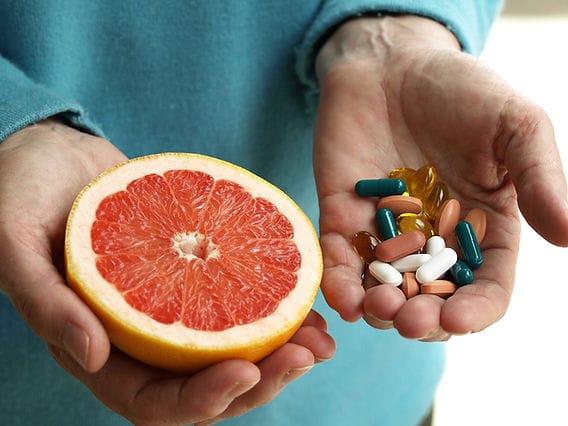
Understanding the Role of Exercise in Detoxification and Cleansing
Exercise plays a powerful role in detoxification by boosting circulation, promoting sweat, and supporting organ function like the liver, kidneys, and lungs. From yoga to cardio, different workouts stimulate natural cleansing pathways. Combined with hydration, exercise helps reduce inflammation, improves oxygen flow, and enhances the body’s ability to flush out toxins. Regular physical activity not only boosts energy but also strengthens the body’s internal purification systems.
💪 Fitness Guru
41 min read · 27, Jun 2025

Introduction
In a world full of pollution, stress, processed food, and chemical exposure, your body is constantly working to eliminate toxins. While detox diets and juices often take the spotlight, exercise is one of the most powerful and natural methods to cleanse your body from within. It doesn’t just help with weight loss or muscle gain—it stimulates every detox pathway in your body.
When you move your body through regular physical activity, you support sweating, circulation, lymphatic drainage, and organ function. These processes are essential to remove waste, improve energy levels, and boost overall well-being.
In this article, we will explore how exercise aids in detoxification and cleansing, the science behind it, and how you can adopt the best routines for a cleaner, healthier body.
Understanding the intricate role of exercise in the body's natural detoxification and cleansing processes is paramount, revealing physical activity not merely as a means for weight management or muscle building, but as a sophisticated and indispensable mechanism that actively supports the elimination of toxins, metabolic waste products, and environmental pollutants. While the liver and kidneys are the primary organs responsible for filtering and neutralizing harmful substances, exercise acts as a powerful amplifier and facilitator for these intrinsic detoxification pathways, stimulating various physiological systems that contribute to a more efficient and comprehensive internal cleanse. This profound connection underscores that a sedentary lifestyle not only contributes to chronic diseases but also diminishes the body's innate ability to purge itself of detrimental compounds, emphasizing that active movement is a fundamental, non-negotiable component of optimal health and cellular renewal.
The most direct and widely recognized contribution of exercise to detoxification is through enhanced circulation and lymphatic flow. During physical activity, the heart rate increases, pumping blood more vigorously throughout the body. This improved blood circulation delivers more oxygen and nutrients to cells, but critically, it also facilitates the more efficient transport of metabolic waste products from tissues to the liver and kidneys for processing and excretion. Simultaneously, exercise, particularly rhythmic movements like walking, running, or jumping, acts as a powerful pump for the lymphatic system. Unlike the circulatory system, the lymphatic system lacks a central pump; it relies on muscle contractions and body movement to circulate lymph fluid. Lymph fluid is a vital component of the immune system, collecting waste products, toxins, dead cells, and pathogens from interstitial spaces and transporting them to lymph nodes for filtration before returning them to the bloodstream for eventual elimination. A sluggish lymphatic system can lead to a buildup of these waste products, contributing to inflammation and a compromised immune response. Regular exercise effectively mobilizes the lymphatic system, ensuring efficient waste removal and supporting a robust immune defense.
Beyond circulation, exercise directly impacts organ function crucial for detoxification. The liver, the body's primary detoxification organ, benefits immensely from increased blood flow and improved metabolic efficiency brought about by regular physical activity. A well-oxygenated liver can more effectively perform its two-phase detoxification process: Phase I, where toxins are neutralized through oxidation, reduction, and hydrolysis, and Phase II, where these neutralized toxins are conjugated with other molecules to make them water-soluble for excretion. Exercise can enhance the activity of liver enzymes involved in these pathways. Similarly, the kidneys, responsible for filtering blood and excreting waste products via urine, operate more efficiently with improved circulation and hydration often associated with active lifestyles. Increased fluid intake during exercise helps the kidneys flush out toxins more effectively. Regular physical activity can also indirectly support kidney health by helping to manage blood pressure and blood sugar levels, both of which can otherwise contribute to kidney damage.
Sweating, particularly during moderate to vigorous exercise, is another direct and often underestimated avenue for detoxification. While the kidneys and liver are the primary routes for major toxins, sweat glands can excrete certain heavy metals (like arsenic, cadmium, lead, and mercury), phthalates, bisphenol A (BPA), and other environmental chemicals. While the quantities of these substances expelled through sweat might be smaller compared to renal or hepatic excretion, regular sweating contributes to the cumulative reduction of the body's toxic burden. Moreover, sweating helps regulate body temperature, promotes healthy skin function, and can improve circulation to the skin, which is the body's largest organ and a minor excretory pathway.
Exercise also plays a significant role in reducing oxidative stress and inflammation, which are major contributors to cellular damage and disease. While intense exercise can temporarily increase oxidative stress, regular, moderate physical activity enhances the body's endogenous antioxidant defense systems, such as the production of enzymes like superoxide dismutase (SOD) and glutathione peroxidase. These antioxidants neutralize harmful free radicals, preventing them from damaging cellular components, including DNA and cell membranes, thereby protecting the very cells responsible for detoxification. Furthermore, consistent exercise has a profound anti-inflammatory effect, reducing systemic inflammation markers. Chronic low-grade inflammation is linked to numerous chronic diseases and can impair organ function, including that of detoxification organs. By mitigating inflammation, exercise creates a healthier internal environment that allows the body's natural cleansing mechanisms to operate optimally.
Indirectly, exercise contributes to detoxification by aiding in weight management and improving metabolic health. Excess adipose tissue (fat) can store fat-soluble toxins, gradually releasing them into the bloodstream. Maintaining a healthy weight through regular exercise helps reduce this toxic storage capacity and improves overall metabolic function, including insulin sensitivity. Improved insulin sensitivity means better glucose regulation, reducing the burden on the liver and pancreas, and contributing to a more efficient metabolic environment where detoxification processes can thrive. Furthermore, exercise positively impacts gut health. While not a direct detoxification organ in the same way as the liver, a healthy gut microbiome is crucial for overall health and plays a role in processing and eliminating certain toxins, as well as influencing immune function. Regular physical activity has been linked to a more diverse and beneficial gut microbiota, which can aid in the elimination of waste products and prevent the reabsorption of toxins from the digestive tract.
Finally, the stress-reducing benefits of exercise also indirectly support detoxification. Chronic stress can impair immune function, increase inflammation, and negatively impact digestive health, all of which can hinder the body's detoxification processes. Exercise serves as a powerful stress reliever, promoting the release of endorphins and reducing stress hormones like cortisol. By managing stress, exercise helps maintain the body's homeostatic balance, allowing its natural cleansing systems to operate more effectively and efficiently without being overburdened by stress-induced physiological disruptions.
In conclusion, the role of exercise in detoxification and cleansing is multifaceted and profoundly integrated into the body's complex physiological machinery. It acts as a powerful catalyst for internal cleansing by dramatically enhancing blood and lymphatic circulation, ensuring the efficient transport of waste products to the liver and kidneys for processing and excretion. Through sweating, it provides a direct, albeit secondary, route for eliminating certain environmental toxins. Furthermore, regular physical activity fortifies the body's antioxidant defenses, combats chronic inflammation, supports optimal organ function (liver, kidneys), aids in metabolic health and weight management, improves gut health, and significantly reduces stress. Collectively, these mechanisms underscore that active movement is not merely beneficial for physical fitness but is an indispensable and fundamental component of supporting the body's innate ability to detoxify and cleanse itself, thereby playing a critical role in disease prevention, cellular renewal, and the maintenance of holistic well-being.
What is Detoxification and Why is it Important?
Detoxification refers to the body's natural process of eliminating toxins—substances that can harm your health if they accumulate over time. These toxins can come from:
- Processed and fried foods
- Alcohol and drug residues
- Environmental pollutants
- Stress hormones
- Household chemicals
- Metabolic waste products
Your primary detoxification organs include:
- Liver: Breaks down harmful substances.
- Kidneys: Filter waste from your blood.
- Lungs: Remove carbon dioxide and airborne toxins.
- Skin: Excretes toxins through sweat.
- Lymphatic system: Clears waste from tissues.
When detoxification is impaired, it may lead to:
- Fatigue
- Digestive issues
- Skin breakouts
- Brain fog
- Weakened immunity
That’s where exercise becomes a natural and powerful ally in your body’s self-cleansing process.
How Exercise Aids in Detoxification
Exercise activates multiple systems in your body that help remove toxins and purify your internal environment. Here’s how:
1. Sweating Removes Toxins Through Skin
Sweat is one of your body's natural detox pathways. When you exercise, your body heats up, and your sweat glands push out impurities like:
- Heavy metals (mercury, lead, cadmium)
- Alcohol byproducts
- Urea and ammonia
- Petrochemicals
Regular sweat through exercise helps cleanse your skin, reduce acne, and release stored toxins.
2. Stimulates Lymphatic Drainage
Your lymphatic system is responsible for transporting waste, immune cells, and toxins from tissues to the bloodstream. Unlike the heart, it doesn’t have a pump—it depends on body movement.
Exercise (especially jumping, stretching, walking, yoga) helps activate lymph flow, making it easier to eliminate toxins through urine and sweat.
3. Enhances Circulation
Good blood circulation ensures that oxygen and nutrients reach all organs, while toxins are carried away efficiently.
- Cardio workouts strengthen your heart and boost blood flow.
- Enhanced circulation improves oxygen delivery and waste removal.
- It supports liver and kidney function for better filtration.
4. Supports Liver and Kidney Function
The liver filters chemicals, and kidneys flush them out through urine. Exercise improves:
- Liver enzyme efficiency
- Blood pressure regulation (which protects kidneys)
- Blood sugar balance (prevents toxic fat buildup in the liver)
5. Reduces Inflammation and Oxidative Stress
Chronic inflammation can impair your detox organs. Regular exercise reduces inflammatory markers and oxidative stress, helping detox pathways function better.
6. Promotes Deep Breathing
During aerobic exercise, your breathing becomes deeper and faster. This:
- Expels carbon dioxide
- Improves oxygen exchange
- Clears airborne toxins from lungs
Types of Exercises for Effective Detoxification
Not all exercise works the same way. Let’s look at which types are most effective for specific detox goals.
1. Cardio (Brisk Walking, Running, Cycling)
- Boosts circulation
- Increases sweat production
- Improves heart and lung function
Tip: Do 30–45 minutes of moderate cardio 4–5 times a week.
2. Strength Training (Weights, Bodyweight Workouts)
- Builds lean muscle (improves metabolism)
- Enhances lymph flow
- Reduces insulin resistance
Tip: Include strength training 2–3 times/week.
3. Yoga and Stretching
- Stimulates lymphatic system
- Promotes digestion and organ massage
- Reduces cortisol (stress hormone)
Tip: Add 20 minutes of yoga or stretching daily or alternate days.
4. High-Intensity Interval Training (HIIT)
- Maximizes fat burning (fat stores toxins)
- Boosts sweat and metabolism
- Triggers detox through intense short bursts
Tip: Practice HIIT 2 times/week for 15–20 minutes.
5. Rebounding (Mini-Trampoline Exercises)
- One of the best ways to stimulate lymph flow
- Improves circulation and immune response
Tip: 10–15 minutes daily on a rebounder can significantly boost detox.
Benefits of Exercise-Driven Detoxification
1. Glowing Skin
Sweating clears pores, boosts circulation, and reduces acne or dullness.
2. Increased Energy
Cleansed blood and better oxygen supply boost energy and alertness.
3. Weight Loss and Fat Detox
Fat cells store toxins. As you lose fat through exercise, your body releases and flushes them.
4. Improved Digestion
Physical movement aids bowel movements, reduces bloating, and supports gut health.
5. Better Sleep and Mental Clarity
Exercise reduces toxic stress hormones like cortisol and boosts mood-regulating chemicals like serotonin and endorphins.
Exercise and Detox Synergy: Tips to Maximize Results
To truly benefit from exercise-driven detox, combine it with supportive lifestyle habits.
1. Hydrate Properly
Drink 8–10 glasses of water daily to flush out toxins released during exercise.
2. Eat a Clean Diet
Include detox-friendly foods:
- Leafy greens
- Lemon, beetroot, turmeric
- Garlic, ginger, berries
- Flaxseeds, chia, and almonds
Avoid:
- Processed snacks
- Sugary beverages
- Alcohol
- Fried or salty foods
3. Get Quality Sleep
Sleep is when your brain and liver detox. Aim for 7–8 hours/night.
4. Pair with Herbal Teas
Post-workout herbal teas (like ginger, dandelion, or tulsi) support further cleansing.
5. Practice Breathwork or Meditation
Deep breathing helps oxygenate your blood and expel toxins through your lungs.
Daily Exercise Detox Routine
Morning
- 10 minutes stretching or yoga
- Lemon water or amla juice
- Light walk in fresh air (sunlight helps with detox enzymes)
Midday
- Brisk 30-minute walk or strength training
- Hydration with coconut water or herbal infusion
Evening
- Light yoga or rebounding
- Herbal tea with ginger or mint
Weekly Add-ons
- 2 HIIT sessions
- 1 digital detox day (reduce stress toxins)
- Epsom salt bath after workout for muscle and skin detox
Common Myths About Exercise and Detox: Busted!
“You only detox through juices or supplements.”
→ False. Exercise activates your body’s natural detox organs.
“Sweating means you're losing fat, not toxins.”
→ Sweating helps release stored toxins, including metals and urea.
“Over-exercising will detox faster.”
→ Wrong. Overtraining stresses your body and can hinder detox. Balance is key.
“You must fast for detox to work.”
→ Not needed. Nourishing your body with clean food and exercise works better.
Sample Exercise and Detox Plan
Breakfast Detox
- Warm lemon water
- Fruit smoothie with spinach, banana, and flaxseeds
Morning Movement
- 15 minutes yoga
- 30-minute brisk walk or strength workout
Post-Workout
- Detox drink: beetroot + ginger + lemon
- Boiled egg or protein smoothie
Lunch
- Brown rice + lentils + steamed greens
- Hydrating cucumber-mint water
Evening Wind-Down
- 10-minute stretch or rebounding
- Herbal tea (dandelion, tulsi, or chamomile)
Dinner
- Grilled tofu or veggies
- Light soup with turmeric and garlic
Conclusion
Exercise is one of the most natural, powerful, and cost-free detox tools available. It works with your body—not against it—to cleanse your blood, flush out toxins, strengthen your organs, and boost overall vitality. Unlike quick-fix detox diets, physical activity supports long-term purification through sweat, breath, circulation, and lymph movement.
Whether you’re just starting or already active, every step you take moves you closer to a cleaner, more energized, and healthier body. Combine exercise with hydration, mindful eating, and rest—and your detox system will thrive.
Move more. Sweat more. Cleanse naturally. Your body is built for it.
Q&A Section
Q1: How does exercise help in the detoxification process?
Ans: Exercise increases blood circulation and lymph flow, helping the body transport and eliminate toxins more efficiently through sweat, urine, and breath.
Q2: What role does sweating play in body cleansing during workouts?
Ans: Sweating helps flush out toxins like heavy metals, alcohol, and excess salts, making it a natural detoxification pathway during physical activity.
Q3: How does exercise support liver function in detoxification?
Ans: Exercise improves overall metabolism, reducing fat buildup in the liver and enhancing its ability to break down toxins and waste.
Q4: Can regular workouts improve kidney function for detox?
Ans: Yes, regular exercise boosts hydration and blood flow to the kidneys, supporting their function in filtering and removing waste from the body.
Q5: How does deep breathing during exercise help with detoxification?
Ans: Deep breathing during workouts increases oxygen intake and expels carbon dioxide, aiding in the removal of gaseous toxins from the lungs.
Q6: What types of exercises are most effective for detoxing the body?
Ans: Cardio workouts, yoga, stretching, and strength training are all effective, especially when combined with proper hydration and rest.
Q7: How does yoga contribute to cleansing and detoxification?
Ans: Yoga stimulates internal organs, supports lymphatic drainage, improves digestion, and encourages mindful breathing—all essential for detox.
Q8: Can exercise help reduce inflammation and oxidative stress?
Ans: Yes, consistent moderate exercise reduces inflammation and oxidative stress, which can otherwise hinder the body’s natural detox systems.
Q9: Is hydration important during detox-focused exercise routines?
Ans: Absolutely. Water helps transport toxins out of the body, and staying hydrated during exercise is crucial for efficient cleansing.
Q10: How often should one exercise to maintain natural detox processes?
Ans: Engaging in physical activity 4–5 times a week for at least 30 minutes is ideal to support ongoing detox and overall health.
Similar Articles
Find more relatable content in similar Articles

Anti-Aging on a Plate: Foods That Keep Your Skin Youthful an..
What you eat reflects on your.. Read More

Parenting and Fitness: Turning Playtime Into Workouts...
Discover how parents can seaml.. Read More

Training with Altitude Masks: Does It Really Mimic Mountain ..
Exploring Altitude Masks: Sepa.. Read More

The Skin-Food Connection: What to Eat for Acne-Free, Radiant..
What you eat directly shapes .. Read More
© 2024 Copyrights by rFitness. All Rights Reserved.